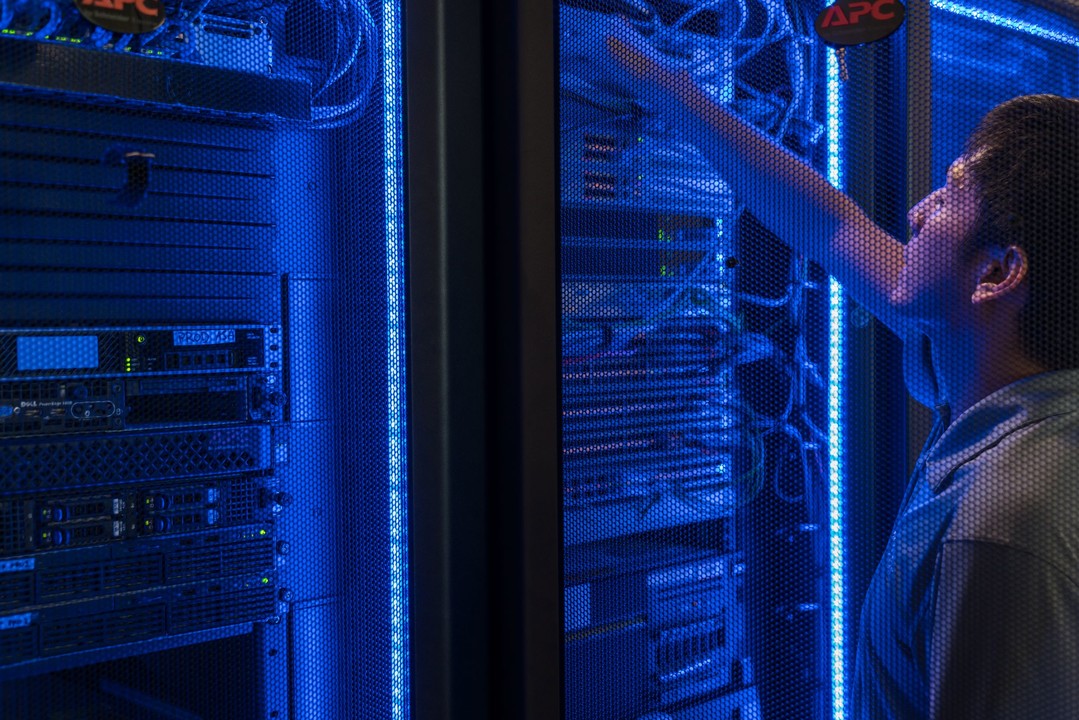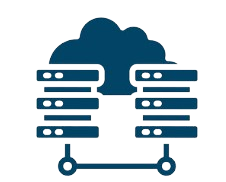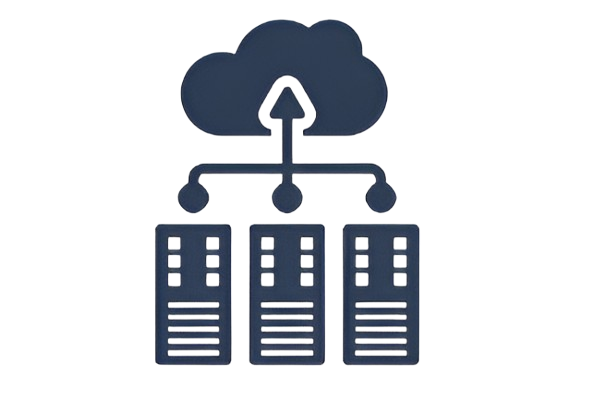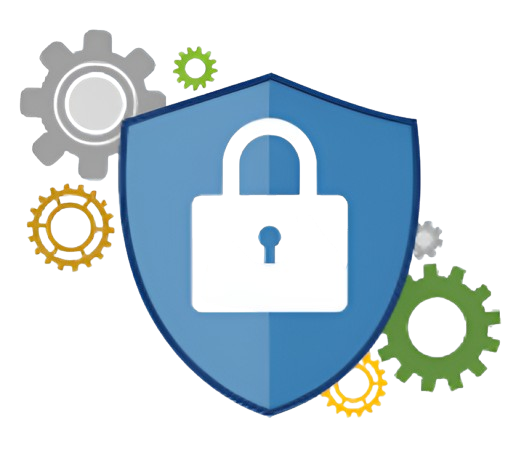


Data center modernization refers to the process of upgrading and optimizing a data center’s infrastructure, operations, and architecture to meet the demands of today’s digital economy. This involves adopting modern technologies such as cloud computing, virtualization, hyper-converged infrastructure (HCI), and software-defined data centers (SDDC) to improve flexibility, scalability, and performance.data center modernization is to create an agile, efficient, and cost-effective infrastructure that can easily adapt to changing business needs, support modern workloads (such as AI, machine learning, and big data), and integrate with emerging technologies like edge computing and IoT.

A hybrid cloud combines private infrastructure (on-premises data centers or private clouds) with public cloud resources, enabling organizations to move workloads between both environments based on their specific requirements. This model allows businesses to maintain control over sensitive data while taking advantage of the scalability and cost benefits of public cloud services.Cloud computing enables businesses to access a wide range of IT resources, such as storage, compute power, and networking, on-demand, while hybrid cloud models combine the benefits of both on-premises infrastructure and cloud services.They provide the flexibility to optimize workloads, manage costs, and respond quickly to business needs.Cloud computing refers to the delivery of IT resources over the internet on a pay-as-you-go basis. These resources, such as virtual machines (VMs), storage, and applications, can be accessed from anywhere, providing scalability and flexibility without the need for significant capital investments in physical hardware.

Hyper-Converged Infrastructure (HCI) is a software-defined IT framework that combines storage, computing, and networking resources into a single, unified platform. Unlike traditional IT infrastructures that rely on separate hardware for each function, HCI consolidates these components into a single solution managed by software, streamlining operations and reducing complexity.Hyper-Converged Infrastructure (HCI) has emerged as a powerful solution. HCI integrates compute, storage, and networking into a single software-defined system, simplifying IT operations, improving scalability, and reducing the total cost of ownership. This all-in-one solution allows organizations to modernize their data centers, manage workloads more efficiently, and adapt quickly to changing business demands.HCI uses virtualization at its core, abstracting hardware resources and making them available through software. This approach not only simplifies infrastructure management but also enables organizations to scale resources as needed, providing flexibility and agility in managing workloads.

Virtualization has transformed the way organizations approach IT infrastructure, enabling more efficient use of hardware, enhanced flexibility, and greater scalability. By decoupling hardware from the operating system and applications, virtualization allows businesses to run multiple virtual machines (VMs) on a single physical server, maximizing resource utilization and reducing costs. Whether through server virtualization, network virtualization, or storage virtualization, this technology forms the foundation for cloud computing, hyper-converged infrastructure (HCI), and software-defined data centers (SDDCs). It involves abstracting physical hardware and running multiple simulated environments, or virtual machines (VMs), on a single physical system. Each VM operates independently, with its own operating system and applications, even though they share the underlying hardware resources.Virtualization helps organizations reduce both capital expenditures (CapEx) and operational expenditures (OpEx). By running multiple VMs on fewer physical servers, businesses can cut down on hardware, energy, and cooling costs.

A Software-Defined Data Center (SDDC) is a data center in which all infrastructure components—compute, storage, networking, and security—are virtualized and managed through software. In an SDDC, hardware resources are abstracted and managed through a single layer of software, enabling greater automation, orchestration, and efficiency.The rapid digital transformation of businesses has led to a growing demand for more flexible, scalable, and efficient IT infrastructure.organizations are increasingly adopting Software-Defined Data Centers (SDDCs) to meet these needs. SDDC is an architecture where all elements of the data center—compute, storage, networking, and security—are virtualized and delivered as a service. This approach provides unprecedented flexibility, agility, and automation, making it the backbone of modern cloud computing and hybrid IT environments.

The rising cost of energy and growing environmental concerns have made energy efficiency a top priority for organizations operating large-scale data centers. By optimizing energy usage, businesses can reduce operational costs, minimize their carbon footprint, and enhance sustainability.Data centers consume enormous amounts of energy to power servers, storage, and networking equipment, as well as to maintain cooling systems that regulate temperature. According to industry estimates, data centers account for roughly 1% of global electricity consumption, with some facilities using as much energy as small cities.As data center capacity grows, so do electricity bills, making energy a significant portion of operational expenditures (OpEx).Electricity consumption contributes to higher carbon emissions, which organizations are under pressure to reduce as part of corporate sustainability initiatives.

Security is the practice of defending digital assets—including data, hardware, and networks—against potential threats such as cyberattacks, data breaches, and insider threats. It encompasses both physical and cybersecurity measures.Compliance refers to the process of following legal, regulatory, and industry-specific standards that govern how data is handled, processed, and protected. Compliance requirements vary depending on the industry, the type of data being handled, and the geographical location.Security & Compliance refers to the set of policies, practices, and measures implemented by organizations to protect sensitive data, systems, and infrastructure from threats while ensuring adherence to legal, regulatory, and industry standards.

Automation and Orchestration play crucial roles in achieving these goals by streamlining IT operations, reducing human error, and improving overall efficiency.Automation in IT refers to the use of software and tools to perform routine, repetitive tasks without human intervention. Automation is used to streamline processes such as server provisioning, software deployment, configuration management, and monitoring. It reduces manual effort, minimizes the risk of human error, and ensures that tasks are performed consistently and reliably.Orchestration is the coordination and management of multiple automated tasks and processes across different systems and environments. While automation focuses on individual tasks, orchestration brings these tasks together to ensure that complex workflows run efficiently and in harmony.

The integration of Artificial Intelligence (AI) and Machine Learning (ML) with Hyper-Converged Infrastructure (HCI) presents a powerful combination that enhances efficiency, automation, and performance. HCI already consolidates computing, storage, and networking into a unified system, and by adopting AI and ML, businesses can take the next step toward intelligent, data-driven IT operations.can analyze data from the HCI environment to detect patterns and anomalies. This allows organizations to anticipate potential hardware failures, performance bottlenecks, or system issues before they occur. By leveraging predictive analytics, HCI systems can proactively schedule maintenance, reduce downtime, and enhance overall reliability.AI and ML can significantly improve security in HCI environments by detecting threats in real time and automating responses to potential breaches. Machine learning models can analyze vast amounts of data to identify suspicious patterns and activities that may indicate a cyberattack or vulnerability.
Migrating from legacy infrastructure to modern technologies can be complex and time-consuming, especially if legacy systems are deeply embedded in business operations. Ensuring seamless integration and minimal disruption during the modernization process is a common challenge.
While modernization promises cost savings in the long term, the initial investment in upgrading hardware, implementing cloud solutions, and rearchitecting infrastructure can be substantial. Organizations need to carefully plan budgets and resources to balance immediate costs with future gains.
Modernizing data centers often involves migrating to the cloud or implementing new technologies, which can introduce security vulnerabilities or compliance risks if not managed properly. Ensuring that security policies and compliance standards are maintained throughout the modernization.